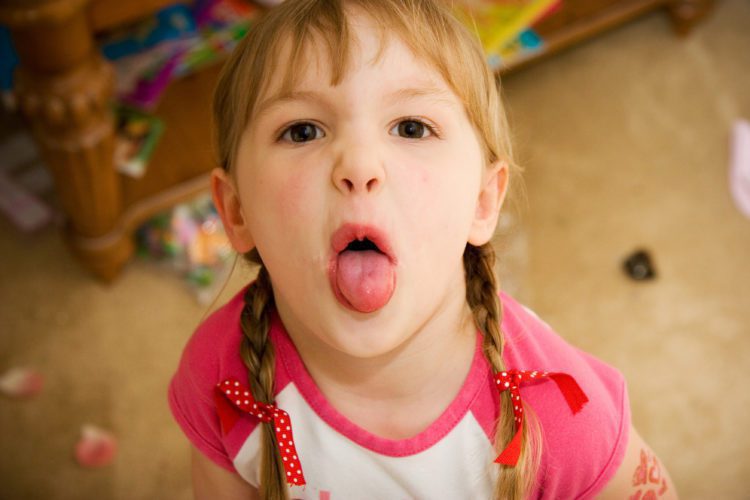Discipline & Challenging Behaviour, Guest Posts, Posts for Parents
Worried your child is an attention seeker? Here’s the real truth.

A guest post by Dr Vanessa Lapointe
As a child psychologist, I often hear from parents, teachers, caregivers or other big people about worries that a child is acting out for the express purpose of securing attention. Not only are they right, but they also shouldn’t be worried! At least not for the reasons they think.
David Loyst, MSc (SLP), a specialist in children with autism, said in a recent presentation that with the teeny, tiny substitution of one little word, the whole issue of attention-seeking behavior is put into perspective. What is this substitution? Change the word “attention” to the word attachment.
Your child is not attention-seeking. Your child is attachment-seeking.
And if all the adults in the land really internalized that truth, then we could change the world. You see, we are attachment organisms by design. We are a social species. We are meant to live in the context of deep, meaningful, emotional relationships.
What does that have to do with your “attention-seeking child”?
Everything!
It works like this: children are not yet fully developed humans. Their brains and hearts are still working to figure it all out. As such, they do not have a full understanding of their bodies and the feelings that sometimes take them over. They also do not have a well-rounded vocabulary that they can put to use in communicating their needs about those feelings. This leaves them with only one modality in terms of effectively communicating their needs to you – behavior. This is true of younger children just as much as it is true of adolescents.
Referring to your child’s behaviors in a derogatory or dismissive way as simply “attention- seeking” is highly problematic. This is a child who will feel neither seen nor heard. This is a child who will have to turn up the volume even louder to have their needs met. And perhaps even more concerning, this is a child who may shut down and cease to attachment-seek, looking to other troublesome sources to meet their deep needs of connection and emotional regulation.
Knowing this, we can see that children do not engage in challenging behaviors for a good time – or “just” to attention-seek. They engage in these behaviors because they are struggling. They are wired neurologically and soulfully to seek connection with their big people in order to manage this struggle. This is not “just attention-seeking”. This is attachment-seeking!
Children have no choice but to seek connection with you in their moments of struggle.
Change The Perspective to Attachment-Seeking
The next time you catch yourself thinking your child is attention-seeking, switch it around to understanding them as attachment-seeking and sit quietly in that space. What is your child’s unmet need? How can you be their answer even if you don’t know the answer? As a human being with a heart, how can you respond to your own little human being so that they will feel known and understood and cared for by you?
This does not mean that you will throw in the towel and give up on all of your rules and boundaries and norms and expectations! In fact, it might mean that you are defining those even more so in order to create safety and containment for your unsettled child. And as you do so, find a way to be both firm and kind at the same time.
Then when your child is in the middle of a challenging behavior, go to the place of focusing the spotlight on relationship rather than on behavior.
“You are so frustrated!”
“You wanted a yes and you got a no!”
“I think if I were you I would feel exactly the same way!”
“It is SO hard to be a little brother!”
As you do this, your child feels understood. With this, you are already 90% of the way to calming that moment AND you are sculpting neural pathways that will help your child do this more effectively themselves down the road.
Drop the Flag
While this is all playing out, you may find that you need to drop a “behavioral” flag. This is a very quick thing that should be done in less than 5 or 6 words. It might sound like “That needs to stop” or “We don’t use those words” or “Gentle hands”. And just as quickly, move back into the space of focusing on the relationship. This is not the time for teaching. That comes later – sometimes much later – when everyone is calm and when you are in a moment of strong emotional connection with your child.
Check in with Yourself
In the midst of this, if you find yourself getting frustrated, take a moment to sort yourself out. Your child is wired to be very sensitive to your emotional state and you will be ineffective in calming them if you are seething on the inside. If this happens often for you, it might be time to work through your own emotional wounds that are creating your upset with your child. Remember, their behavior is essential. Your reaction to that is yours and yours alone to own.
Connection is the Answer
The bottom line is this: children will engage in behavior to get your attention – because they have to! They have no other way as creatures of attachment. They are not attention-seeking – they are attachment-seeking. So if the need be attachment, then the answer be connection.
This is the science of child development.
This is how we grow children up in the best possible way.
This is how we change the world.

Guest blog author:
Dr. Vanessa Lapointe is a Canadian author, parenting educator and registered psychologist who has been supporting families and children for more than 15 years. She is the author of the wonderful new book, Parenting Right From the Start. In March 2020 she will be bringing her seminar based on this book to Perth, Brisbane and Sydney. Find out more…
Image credit: ©️ Mat Hayward /Adobe Stock – stock.adobe.com



